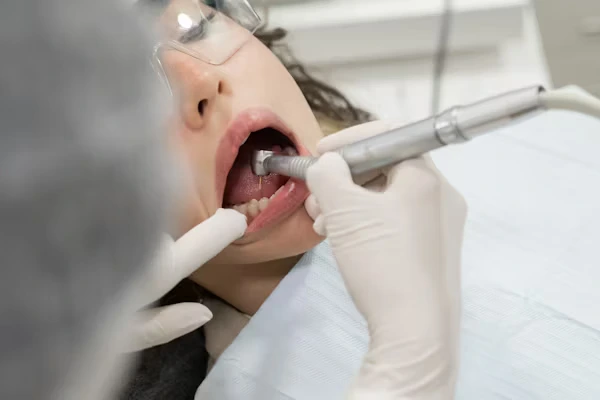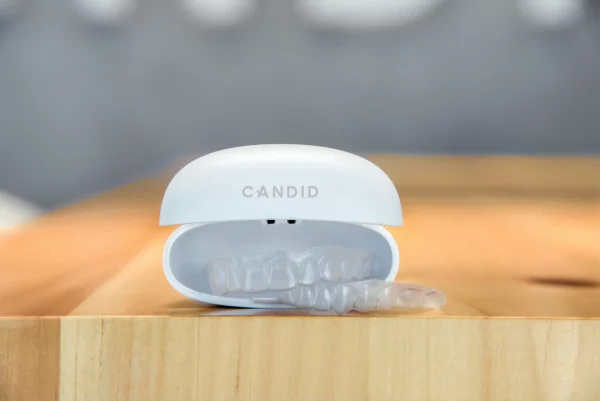The integration of Invisalign and dental implants represents a significant advancement in contemporary dental practice. These modalities, while distinct in their primary objectives, can function synergistically when appropriately sequenced and managed. Invisalign is primarily employed to correct malocclusion by gradually repositioning natural teeth, whereas dental implants are utilized to restore edentulous spaces with prosthetic replacements that closely mimic the function and appearance of natural dentition.
A critical factor in successfully combining these treatments is timing. Since implants are osseointegrated and functionally ankylosed within the bone, they do not respond to orthodontic forces once placed. Therefore, treatment planning often involving interdisciplinary collaboration is essential to ensure optimal outcomes. In most cases, Invisalign therapy is initiated prior to implant placement, allowing for ideal alignment of the remaining teeth and precise positioning of the future implant.
Invisalign and dental implants can be integrated effectively to enhance both function and esthetics. Patients considering this approach should be informed of the procedural nuances and consult with their dental care team to develop an individualized treatment plan.
Invisalign and Dental Implants Compatibility

Invisalign is a discreet and flexible orthodontic solution, but what happens if you already have dental implants or need one in the future? That’s a common concern for adults exploring smile correction later in life. The good news is, in many cases, Invisalign and implants can work together when planned correctly.
Whether you’re dealing with a missing tooth, an existing implant, or shifting teeth, your dentist can design a treatment plan that prioritizes both alignment and restoration. The key is understanding how each component works and when to time each phase of treatment. It can’t move implants, but it can absolutely improve the alignment of surrounding teeth to create a balanced, functional smile.
Can You Get Invisalign If You Have Dental Implants?
Certainly, individuals with dental implants can still be candidates for Invisalign treatment, though the process necessitates a customized approach. Dental implants are securely anchored and remain stationary, unlike natural teeth, so dental professionals must carefully design the aligner plan to accommodate these fixed points.
In some scenarios, it is utilized prior to implant placement to position the natural teeth optimally, making space for a future implant. Alternatively, if implants are already present, it may be employed to adjust the alignment of the remaining teeth or to refine the bite. In both cases, the treatment strategy is personalized to maintain the stability of the implant while enhancing overall dental alignment.
Planning Orthodontics Around Existing Implants
When a dental implant is already present, Invisalign trays are specifically designed to leave that implant undisturbed while facilitating the movement of the surrounding teeth. Since implants are permanently fixed to the jawbone, they do not respond to orthodontic forces in the way natural teeth do. To address this, dental professionals utilize advanced 3D imaging and planning software, ensuring the implant remains stationary throughout the course of treatment.
While achieving textbook-perfect alignment may not always be possible in cases involving implants, it can still deliver substantial cosmetic and functional improvements. Many patients report high levels of satisfaction with enhancements in bite function and smile symmetry, even when minor limitations exist due to the fixed nature of the implant.
Why Sequence Matters in Treatment
The sequence in which dental treatments specifically Invisalign and implants are performed significantly influences both the efficiency and the long-term success of the outcome. Typically, it is advisable to begin with orthodontic treatment, such as Invisalign, before proceeding with the placement of dental implants.
The reasoning is straightforward: dental implants are anchored into the jawbone and remain fixed, so they cannot be moved once placed. By first using Invisalign to align the teeth and create the appropriate space, clinicians can ensure that the implant will be positioned correctly and function properly within the bite. Placing implants prior to addressing alignment issues can limit future treatment options and may result in unfavorable bite dynamics or esthetic challenges. Thus, sequencing these procedures thoughtfully is essential for optimal results.
Invisalign Before or After Dental Implants?

One of the most frequent questions from patients considering both treatments is: “Should I do Invisalign before or after getting my implant?” It’s a smart question and an important one because the order of treatment can significantly impact your results. Dental implants are fixed in place and don’t move like natural teeth, so if you’re planning to straighten your smile, the timing of Invisalign matters. In many cases, orthodontic treatment is recommended before placing the implant to ensure proper spacing and alignment.
However, if you already have an implant, Invisalign can still be used to shift the surrounding teeth and improve overall alignment. Understanding how these treatments work together is key to achieving a functional, beautiful smile and your dentist or orthodontist can guide you through the best plan for your specific needs.
Ideal Timeline for Tooth Replacement and Alignment
Dental professionals advise completing Invisalign treatment prior to placing an implant. The logic here is pretty straightforward: aligning the teeth first allows for more accurate positioning and ensures there’s enough room for the future implant. Once everything’s in the right place, then it makes sense to move ahead with the implant so it fits the new bite.
If a patient is already missing a tooth, a temporary replacement like a flipper or a bridge can be used while undergoing Invisalign. This approach helps maintain the necessary space and prevents unwanted shifting, all while supporting aesthetics until it’s time for the final implant.
Benefits of Doing Invisalign First
Beginning orthodontic treatment with Invisalign offers notable advantages. First, it allows for correction of bite alignment prior to placing permanent restorations, which is critical for long-term oral health. Additionally, properly aligned teeth enable more precise and effective implant placement, thereby improving both function and aesthetics.
Misaligned teeth can complicate implant procedures, sometimes resulting in suboptimal placement and increased risk of complications. By addressing alignment issues beforehand, patients and clinicians can avoid these challenges. The overall cosmetic outcome tends to be more harmonious and natural-looking.
Furthermore, initiating treatment with Invisalign provides dental professionals with greater control over the sequence and outcome of the overall treatment plan. This often leads to more predictable results and minimizes the need for compromises in both function and appearance.
Risks of Delaying Implant Placement
Delaying the placement of a dental implant can carry significant risks. Prolonged absence of a tooth may lead to adjacent teeth shifting out of alignment, and the underlying bone may start to deteriorate. In scenarios like these, Invisalign can still offer tooth repositioning, but additional procedures such as bone grafting might become necessary before proceeding with the implant.
This underscores the importance of early assessment. For individuals considering both Invisalign and a dental implant, it’s advisable to consult a dental team skilled in managing complex, multi-step treatment plans. Early intervention and expert guidance can help streamline the process and improve outcomes.
Treatment Considerations for Combined Cases
Working with both Invisalign and implants takes careful coordination, especially if your goal includes functional improvement—not just cosmetic changes. Because implants are permanently fixed into the jawbone, they don’t shift like natural teeth during orthodontic treatment. That means your dentist or orthodontist must plan precisely how your bite will come together once Invisalign has done its job. This coordination ensures that your final smile isn’t just straighter, but also comfortable, balanced, and long-lasting. A thorough evaluation and customized treatment plan are essential to align your teeth properly while preserving the integrity of your implant. With the right approach, combining these treatments can deliver both aesthetic and functional success.
How Invisalign Aligners Are Adjusted for Implant Patients
When a patient has a dental implant, Invisalign trays are specifically modified so that they do not apply pressure to the implant crown. The dental professional, either an orthodontist or general dentist, will adjust the design of the aligners to ensure the implant remains undisturbed, allowing only the natural teeth to move as planned.
Additionally, small bonding points known as “attachments” may be strategically placed on certain teeth. These attachments help the Invisalign trays exert more precise force where needed, but care is taken to avoid the area surrounding the implant. This ensures the stability of the implant while facilitating effective orthodontic movement of the remaining teeth.
Managing Bite and Jaw Alignment
When implants are involved, proper bite alignment is even more important. An uneven bite can place excessive stress on the implant, which may lead to discomfort or premature wear. Invisalign can be used to balance the bite before placing the implant—or improve bite function if an implant was already placed. For patients with jaw tension or TMJ concerns, this added alignment can provide significant long-term relief.
Limitations and Alternatives
While Invisalign is versatile, it does have limitations. If you have multiple implants, extensive crowding, or complex bite issues, your provider might recommend a combination of treatments or refer you to a specialist. For example, traditional braces may offer more precise movement in cases where several implants are present. In other situations, Invisalign can be paired with minor cosmetic reshaping or veneers to achieve the best aesthetic result.
Cost of Invisalign and Dental Implants Combined

Cost is a major factor for patients considering both Invisalign and dental implants. Since these treatments serve different purposes—one for alignment, the other for tooth replacement—they are typically billed separately and may involve different specialists. Invisalign costs can range from $3,000 to $7,000 depending on the complexity and duration of treatment, while a single dental implant can cost between $3,000 and $5,000 or more, especially if bone grafting or additional procedures are needed.
Insurance coverage varies, and while some dental plans may contribute toward Invisalign or implants, full coverage is rare. Understanding each component’s pricing, payment plans, and financing options can help you plan your investment wisely. Consulting with your provider about a coordinated treatment timeline may also allow you to space out payments over time.
Understanding Separate and Combined Costs
Invisalign usually ranges between $3,000–$7,000 depending on case complexity and duration.
Dental implants typically cost $3,000–$5,000 per tooth, which includes the post, abutment, and crown.
Combined, you could expect to invest between $6,000 and $12,000 or more for both treatments, especially if imaging, temporary restorations, or bone grafts are involved. However, many dental offices offer bundled plans and flexible payment options to help you manage costs.
Does Insurance Cover Both Invisalign and Implants?
Coverage varies widely. Dental insurance may partially cover implants especially if tooth loss was caused by trauma or infection. Orthodontic coverage is less common for adults but may be available through supplemental plans. Your dentist’s office can help verify your benefits and maximize any available coverage. If you’re using a Health Savings Account (HSA) or Flexible Spending Account (FSA), those funds can usually be applied to either treatment.
Graham Park Dental Payment Plans and Affordable Options
At Graham Park Dental, we understand that combining Invisalign with implant therapy is a significant investment in your oral health and confidence. We offer:
- No-interest financing through trusted third-party lenders
- Monthly payment options tailored to your budget
- Transparent pricing with all-inclusive treatment plans
- Flexible scheduling to fit your lifestyle
We’re here to guide you through each step from consultation to your final result with a plan that works for you.
Frequently Asked Questions (FAQs)
1. Can I use Invisalign if I already have one or more implants?
Yes, Invisalign can still be used even if you already have dental implants. While implants themselves can’t be moved, the aligners are custom-designed to avoid placing pressure on them. This allows the surrounding natural teeth to shift as needed without disrupting the stability of the implant. Your dentist or orthodontist will create a treatment plan that accounts for the position of the implant and ensures your bite aligns properly. With careful planning, Invisalign can improve your overall smile and function without compromising the integrity of your existing dental work. It’s a safe, effective option for many patients looking to straighten their teeth around an implant.
2. Is it better to get Invisalign before dental implants?
In most cases, yes, doing Invisalign before getting a dental implant is the preferred approach. Aligning your natural teeth first allows your dentist to optimize their positioning and create the proper space for a more precise and functional implant placement. This sequence helps ensure a better bite, improved aesthetics, and reduces the risk of spacing or alignment issues around the implant. Once teeth are properly aligned, the implant can be placed exactly where it’s needed for long-term stability and comfort. However, every smile is unique, and some situations may require a different approach. That’s why it’s essential to consult with your dentist or orthodontist for a personalized treatment plan.
3. How do dentists plan treatment when both are needed?
Dentists use advanced tools like digital imaging, 3D scans, and collaborative treatment planning to coordinate Invisalign and implant placement effectively. These technologies allow them to map out your bite, track tooth movement, and identify the best timing for each step of the process. The primary goal is to ensure the dental implant fits seamlessly within the corrected alignment of your teeth. In some cases, your provider may use temporary solutions such as retainers, clear aligners, or space maintainers to hold the ideal position for the future implant. This careful sequencing helps avoid complications and ensures long-term success. By working with a skilled dental team, you can achieve a straight, functional, and complete smile.
4. Will Invisalign move my implants?
No, dental implants cannot be moved with Invisalign because they are fused directly to the jawbone and act as fixed structures. Unlike natural teeth, implants don’t have ligaments that allow for movement. Instead, Invisalign aligners are designed to gently shift the surrounding natural teeth while leaving the implant undisturbed. This requires careful planning to ensure that the movement supports a balanced bite and proper spacing. Your dentist or orthodontist will monitor your progress closely to ensure the implant remains stable and fully integrated throughout treatment. With the right approach, you can safely combine both treatments for a functional and attractive smile.
5. Can Invisalign improve bite alignment around implants?
Absolutely. Invisalign can adjust the position of your natural teeth to achieve better alignment around a dental implant, helping to create a more balanced and functional bite. This is especially useful if the implant was placed before orthodontic treatment, resulting in spacing or alignment issues. By moving the surrounding teeth into ideal positions, Invisalign ensures the implant fits more harmoniously within your bite. A well-aligned bite distributes pressure evenly across all teeth, reducing strain on the implant and supporting its long-term success. This kind of strategic alignment not only improves function but also enhances the overall appearance of your smile.
Ready to start your invisalign and implant journey? A confident smile starts with a smart plan. If you’re considering Invisalign, dental implants, or both, the best next step is a consultation with a provider who understands how to coordinate these treatments safely and effectively. A customized approach ensures your smile is not only straighter but stronger and more functional long-term.
At Graham Park Dental, we specialize in combining restorative and cosmetic care with precision. Let us help you build a personalized plan that fits your smile goals, timeline, and budget. Schedule your consultation today and take the first step toward your complete, confident smile.


